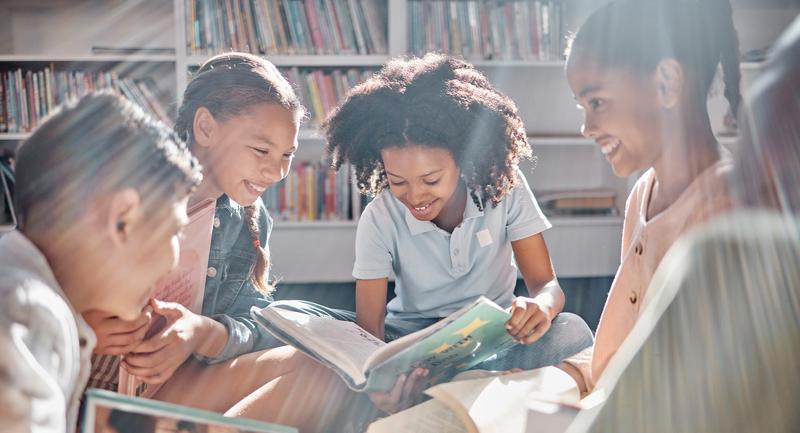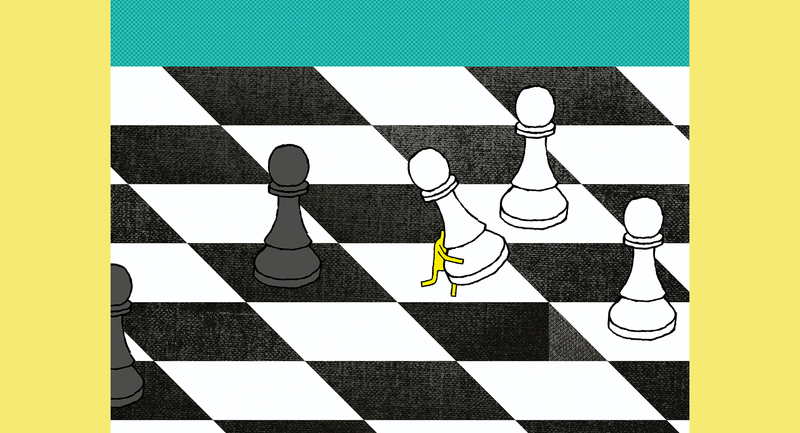The daily reality of teaching distracted minds can be a heavy burden for teachers under the pressure of imparting curriculum remotely. Long hours spent reinventing education and adapting lessons to online learning does not often yield the usual satisfaction of witnessing children's engagement with learning. Many teachers are at a loss with the distractibility and ask: "If children can't focus, what more can I do?"
The Four Steps of Focusing
Children's brains tend to be more active than adults', which makes the process of focusing for extended periods of time more challenging for the youngest students (Sprenger, 2008). The context in which children grow influences the development of this skill. In particular, the past decade of research shows that the overuse of videogames and various electronics has a significant effect on our neuroplastic brains. Amongst other things, this overuse is creating a generation of media multi-taskers who tend to have a smaller anterior cingulate cortex—an area heavily involved in emotion regulation and attention (Loh & Kanai, 2014).
These brain changes affect everyday life, increasing attention difficulties and decreasing academic performance. Chronically over stimulated minds can get stuck in the habit of mentally darting from one task to another, which inhibits deeply focused attention. During quarantine, the number of children who spent more than four hours daily using electronic devices doubled in all age groups (Statistica, 2021). The result is a cohort of students who need an increasing amount of stimulation to pay attention. The average child's good intentions and teachers' reminders are often not enough to combat the wandering mind, especially when learning takes place over Zoom.
To help young people become more receptive to learning, we need to actively engage, cultivate, and sustain their focusing skills. Focusing the mind requires four steps: 1) Disengaging from a previous experience (transition); 2) Concentrating effectively on a subject; 3) Blocking out distractions (e.g. inhibition control); and 4) Accessing a physiological state that allocates mental resources to a specific subject (instead of wandering) (Reck & Hund, 2011).
Luckily, brain research points to effective ways of igniting children's attention.
Positive emotions can facilitate transition and concentration.
Emotions significantly affect the blood flow in the brain (Lindquist, Wager, Kober, Bliss-Moreau & Barrett, 2012). Intense negative emotions tend to highjack blood flow away from the frontal lobe, which is associated with thinking and learning, and fuel the limbic system, which redirects resources into the fight or flight muscle groups (Siegel, 2010). In contrast, positive emotions enhance critical thinking, openness, and the ability to pay attention (Fredrickson & Branigan, 2005). Moreover, brain research reveals that emotional faces, especially happy or anxious ones, are detected more rapidly and have a greater resistance to attention failure (Milders, Sahraie, Logan, Donnellon, 2006).
Enthusiastically starting class with a positive activity (one that creates a bridge between the child's previous experience and the class) can pay off. This is especially relevant in the context of remote learning where transitions are challenging. A child may have been sleeping, eating, or fighting with a sibling just a few seconds before logging on and they need to disengage from their home life. An engaging beginning is more likely to draw their attention and can even trigger a dopamine release, which is the neurotransmitter associated with joy. Something as simple as starting each day with facial yoga for elementary students or with a National Geographic for Kids mystery question ("Which furry animal produces venom, glows under black light, and has a duck beak?" or "What's the biggest object ever created in gold?") can lighten up everyone's mood and initiate focus.
Visuals help with inhibition control and sustainable focus.
Did you know that 80 percent of the information that enters the brain is visual and 50 percent of the sensory cortex is devoted to processing images (Jensen, 2008)? Since sight is the sense that receives the most attention in the brain, incorporating visual elements in our teaching can dramatically boost children's attention and compete (to a certain degree) with children's constant mental replaying of videogames and movies. Teachers can provide images or ask children to imagine the representation of just about anything, especially in the middle or at the end of class when students' minds are becoming tired.
For example, you can draw an image hiding the number 100 during a math lesson or ask students to visually represent a character in a book they're reading in English. Any visual material will do the trick, but especially if it's colorful and engaging. Teachers can also have a different colorful background or costume item every week to facilitate the Monday morning transition or invite students to be on the lookout for a weird object that doesn't belong in the lesson at an unforeseen time and be the first to call it out. It is best to avoid rewards because it may overly skew people's attentiveness to the game instead of the class material, but visuals can help to create more satisfaction with paying attention.
Intrigue-based mindfulness effectively cultivates all aspects of focusing.
Mindfulness training—the art of entering into a brain state that is physiologically different than the state of the wandering mind—is often recommended to remediate attention problems and develop focusing skills (Farb et al., 2007). Numerous studies demonstrate that regular mindfulness opportunities offer cognitive benefits and emotion regulation (Malinowski, 2013). Yet, a limitation of many traditional programs lies in significant individual differences in people's ability to access these states of mind (Farias & Wikhom, 2018). This is especially true with young people, as many struggle with the focus required for these practices and may be preoccupied by their grades, relationships, safety issues, traumatic experiences, what others will think, social media or their last videogame. Those who most need to develop focused attention can be the least likely to be able to engage.
One form of mindfulness that may be more accessible to children is Intrigue-based mindfulness. Intrigue-based exercises only take a few minutes and can ignite students' natural curiosity, making it much easier to cultivate attention skills (Beaudoin & Maki, 2020). Some exercises invite children to modify their airflow and others use imagery, mystery, and rhythms, which activate the parasympathetic nervous system associated with calm and focused attention.
A collection of these exercises was compiled and released during the COVID-19 pandemic (Beaudoin & Maki, 2020). For example, children can stand up and be completely still as if they were "Tree People." In this exercise, there are two kinds of Tree People: Some breathe from their feet and take nutrients from the Earth, up their "trunk" to their head, while others breathe from the top of their heads downward and prefer nutrients from the sky. A script guides students through both experiences, and they are informed ahead of time that they will have to choose which style feels most comfortable to them. Another example is to ask students what their "wisdom age" is for that day. Each student is invited to figure it out by taking a deep inhale and slowly blowing out with lips pursed as many imaginary "Wisdom Candles" as they can, one by one, for a few minutes. Students who manage to be calm and focused can blow out 30–50 candles, which is metaphorically a very wise "age"! Students are encouraged to keep their wisdom age to themselves to not invite competitiveness.
Because of the direct effect on the brain's biochemical processes, intrigue-based exercises have been found to improve young adult students' test results after three 10-minute practice sessions (Gorman & Gree, 2016). Once students have learned some of these foundational focusing skills, they are better positioned to listen in class. When young people are given the opportunity to try different practices, they eventually find a favorite one, which they can choose to use on their own to cultivate the embodied knowledge of how exactly it feels, internally, when they focus their mind.
Practice Makes Perfect
Young minds are more distractible than ever in the history of education. Research-based strategies such as positive emotions, visuals and intrigue-based mindfulness can help us boost students' focusing abilities. Let's help young people practice the crucial foundational skill required in all learning: focus.







